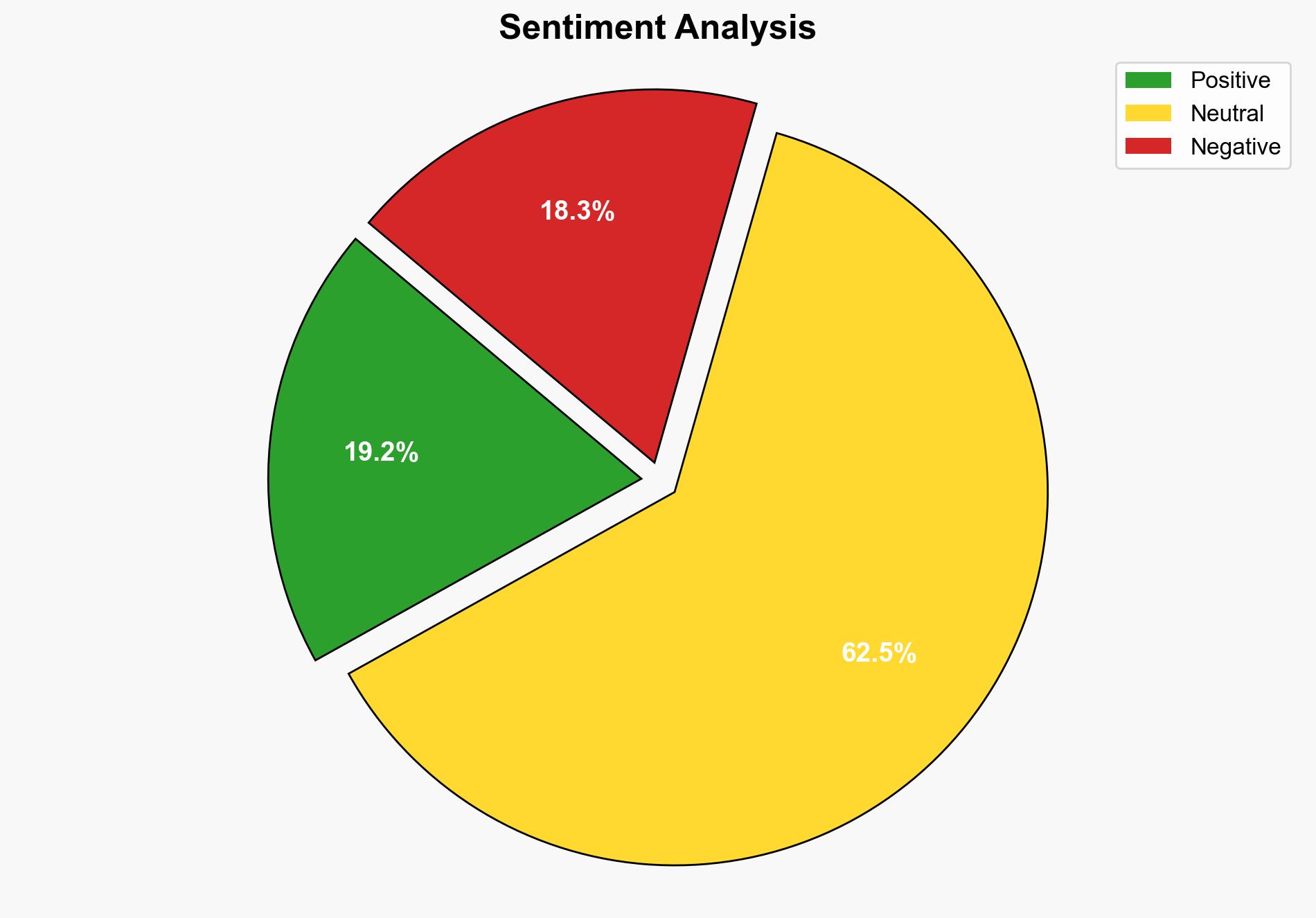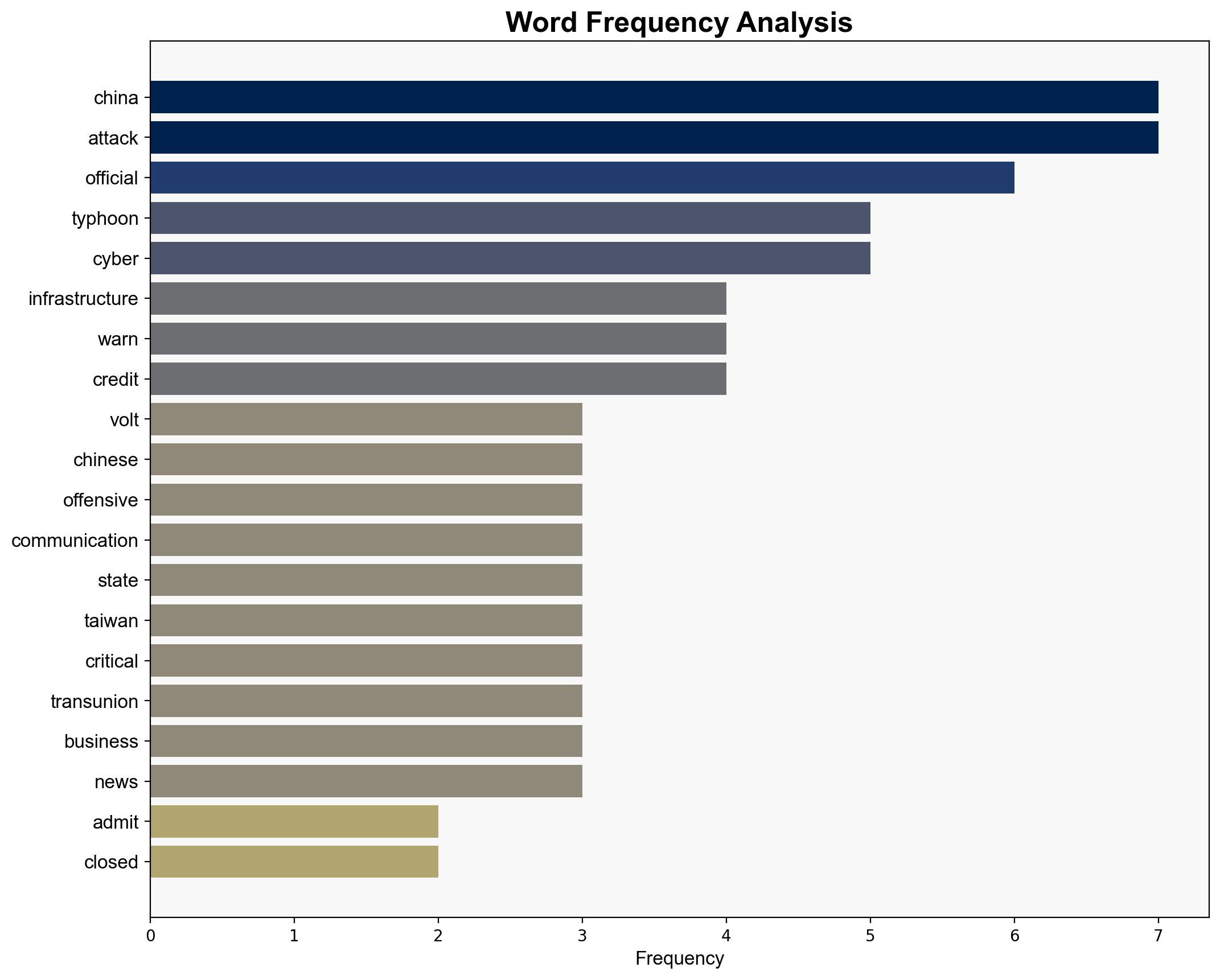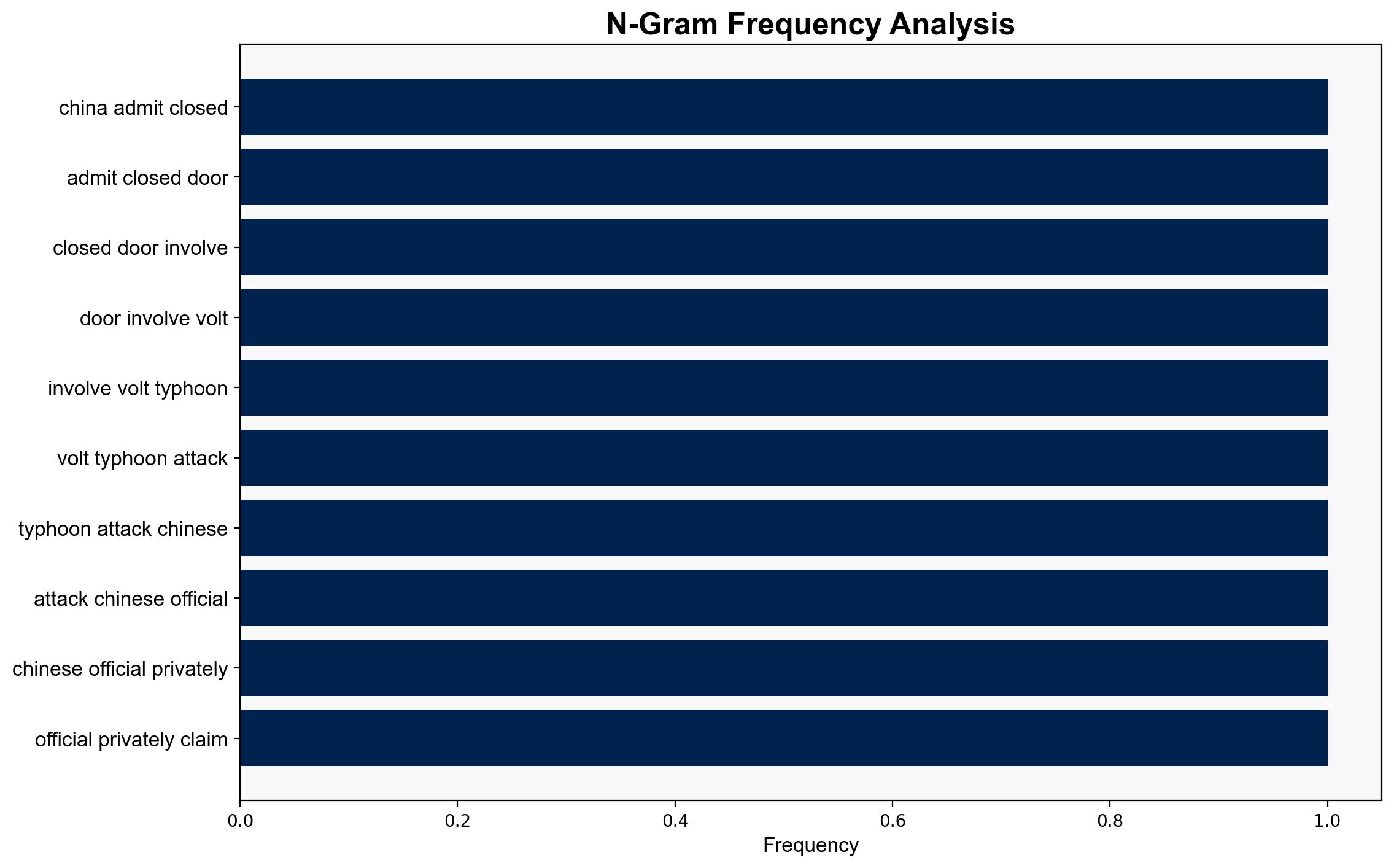China admits behind closed doors it was involved in Volt Typhoon attacks – TechRadar
Published on: 2025-04-11
Intelligence Report: China admits behind closed doors it was involved in Volt Typhoon attacks – TechRadar
1. BLUF (Bottom Line Up Front)
China has privately acknowledged its involvement in the Volt Typhoon cyberattacks targeting US critical infrastructure. This admission, while indirect, signals a strategic warning to the US regarding its support for Taiwan. The cyber intrusions have compromised sectors such as energy, communications, transportation, and water. The escalation of cyber hostilities poses significant risks to US national security and economic stability.
2. Detailed Analysis
The following structured analytic techniques have been applied for this analysis:
General Analysis
The Volt Typhoon attacks represent a sophisticated and prolonged cyber campaign by China, targeting critical US infrastructure. The acknowledgment of these attacks by Chinese officials suggests a calculated move to demonstrate cyber capabilities and deter US actions regarding Taiwan. The attacks have exposed vulnerabilities within US infrastructure, highlighting the need for enhanced cybersecurity measures. The potential for retaliatory cyber strikes by the US and further escalation remains high.
3. Implications and Strategic Risks
The implications of China’s involvement in the Volt Typhoon attacks are profound. The risks include:
- Increased vulnerability of US critical infrastructure to future cyberattacks.
- Heightened tensions between China and the US, potentially leading to further cyber and economic conflicts.
- Potential destabilization of regional security in East Asia, particularly concerning Taiwan.
- Economic repercussions due to disrupted infrastructure and increased cybersecurity expenditures.
4. Recommendations and Outlook
Recommendations:
- Enhance cybersecurity protocols across critical infrastructure sectors to mitigate vulnerabilities.
- Engage in diplomatic efforts to de-escalate tensions with China, focusing on cyber norms and agreements.
- Invest in advanced threat detection and response technologies to improve resilience against cyber threats.
- Consider regulatory measures to strengthen national cybersecurity frameworks.
Outlook:
Best-case scenario: Diplomatic negotiations lead to a reduction in cyber hostilities, with both nations agreeing to cyber norms and confidence-building measures.
Worst-case scenario: Continued cyber offensives result in significant disruptions to critical infrastructure, escalating into broader economic and military conflicts.
Most likely scenario: Ongoing cyber skirmishes persist, with periodic escalations and retaliations, necessitating sustained investment in cybersecurity defenses.
5. Key Individuals and Entities
The report mentions significant individuals and organizations but does not provide any roles or affiliations. Key individuals include Chinese officials who have acknowledged the attacks, and US officials interpreting these admissions as strategic warnings. The hacking groups Salt and Volt Typhoon are central to the cyber activities discussed.




